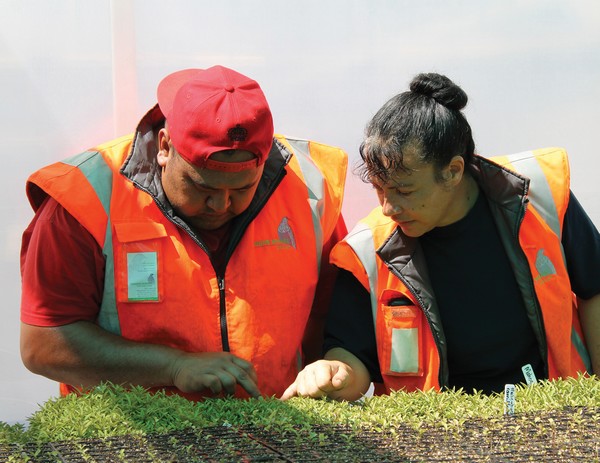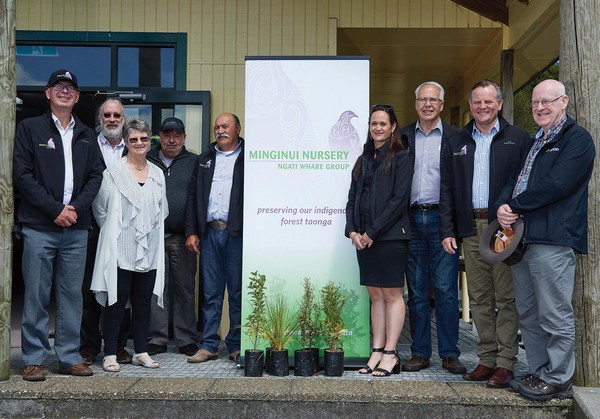Growing from strength to strength - the Ngāti Whare and Scion partnership

In the time since the nursery opened, Ngāti Whare and Scion’s relationship has grown through a forward thinking partnership with the potential to shape a new indigenous forestry industry for New Zealand.
What's happened since the opening
The Minginui Nursery has reached some major milestones in its first year of operating. The nursery has seven full time staff and has supplied thousands of trees to customers including neighbouring iwi, Tūhoe and Ngāti Manawa. There are up to 60,000 trees in the nursery, and with two seed collections under their belt and a second crop sown, the team hopes to have 100,000 plants in the nursery by the end of the year.
All this occurs under the watchful eye of Nursery Manager Peter Harington and his team. Peter is seconded to Minginui from Scion. As part of a Vision Mātauranga project, supported by the Ministry for Business, Innovation and Employment, Peter’s role is also to mentor, train, and work closely with Minginui staff. This includes providing them with research skills. Ngāti Whare and Scion are supporting Doreen Roberts (Minginui Nursery’s technician) through a co-designed research programme that will take the new vegetative propagation technology from the research scale to commercial nursery and forest regeneration scale. In parallel, Scion participants are mentored by kaumātua and hāpu members to explore and understand Ngāti Whare mātauranga further strengthening the relationship.
Taking stock of the first year, the landscape in Minginui is just as Ngāti Whare planned, the nursery growing more than just trees. Ngāti Whare Holdings GM Mere George says that the nursery has fostered a sense of community pride and a new interest in science, “It was a bigger picture for us in terms of our desire to ensure that it [the nursery] could be a catalyst for change.
"This [the nursery] has been able to provide jobs and provide an opportunity for education. So the kids at the school look at it and say, wow yeah, I might actually be interested in science. They know that science isn’t just in the lab, it’s in the community, it’s in our nursery.”

Looking to the future
As the nursery moves beyond the establishment phase, the governance group that steers the roll out of the propagation technology is looking to its next steps – growing the science, business and industry that will drive native forestry as a viable option in the future.
Mere says that Ngāti Whare see potential ahead of them, “What’s really exciting about the technology is that we might be able to facilitate native forestry.”
As Anne Harris, part of the Scion team, says, “If we’re going to get commercial indigenous forestry going in New Zealand, it will be vegetative propagation that will make it viable.”
If the partners can achieve what they set out to do, the Minginui Nursery will be the first of many high-tech indigenous nurseries mass propagating podocarps across Aotearoa.
In the meantime, Mere says that native forestry could transform Minginui Te Whaiti again. “It’s as though the downfall for the community was the cutting of native trees and logging of native timber, but now, the thing that might revive the village is going to be the nursery and effectively replanting the areas that were logged way back then. It has come full circle.”
